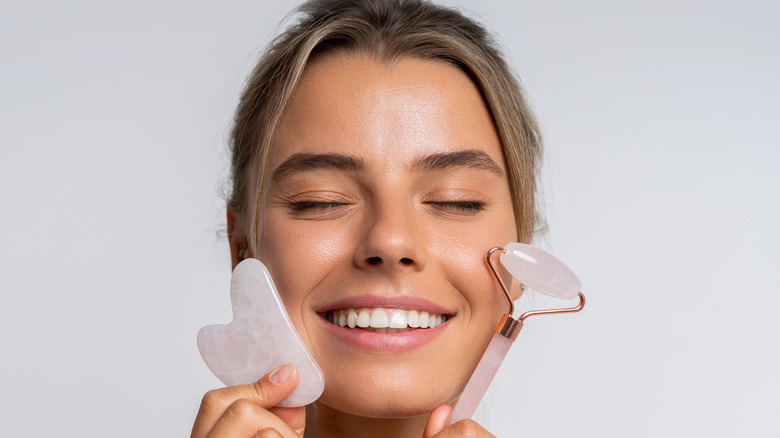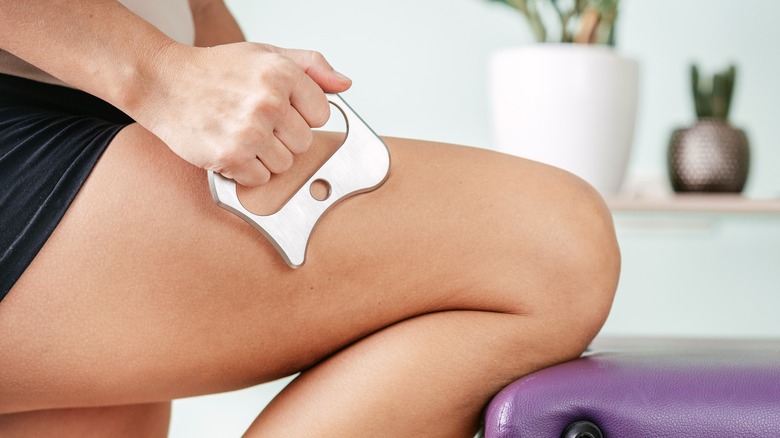How To Use A Gua Sha For Maximum Health Benefits
You might have seen people using gua sha tools on TikTok or Instagram, but this Chinese practice stems back well before the Stone Age (via Shape). Gua sha relies on the concept that we have meridians throughout our body that circulate our life force, called qi. If any of these meridians become blocked at specific places in our body, illness can develop. The light scraping in gua sha helps open up these meridians to allow qi to flow more freely. Although an acupuncturist might talk about stimulating qi through gua sha, a physical therapist will refer to this method as the Graston Technique to break up scar tissue (via Cleveland Clinic).
According to Healthline, gua sha can be used to treat arthritis, fibromyalgia, neck pain, and migraines. Some case studies have found it can relieve symptoms associated with hepatitis B and Tourette syndrome. A 2017 study in the Journal of Traditional Chinese Medicine looked at what happened when gua sha was used on weight lifters. After treatments twice a week for eight weeks, the weight lifters found that the perceived exertion of their maximum lift was easier.
Although gua sha is relatively safe, it's best to see a licensed acupuncturist if you're experiencing serious symptoms, according to Healthline. However, if you're experiencing minor muscle knots in your body or tension in your face, you might find some relief if you try it at home.
Gua sha for the body and face
If you don't have a gua sha tool handy, a spoon or coin will do, according to MedicalNewsToday. To get the tool to move freely across the skin, apply some oil to lubricate the skin. When holding the tool, you'll keep it at an angle almost parallel to the skin (via Shape). For muscle knots, you'll work the tool perpendicular to the direction of the muscle first to loosen the tissues. Then, you'll work in the direction of the muscle to lengthen and straighten it, according to the Cleveland Clinic.
Working on the face and neck requires much less pressure. Begin working first on the neck, moving the tool upwards from the collarbone to the ear. Use only upward strokes along the neck until you reach the chin (via Shape). As you move to the face, start from the middle of your face and stroke toward your ears and temples (via Cleveland Clinic). You can begin from the corner of your mouth along your jawline, then work under the cheekbone, under the eye, and across your forehead (via Shape).
You should avoid the Graston Technique or gua sha if you have open wounds, high blood pressure, bone fractures, kidney disorders, or certain cancers, according to Spine-Health.


